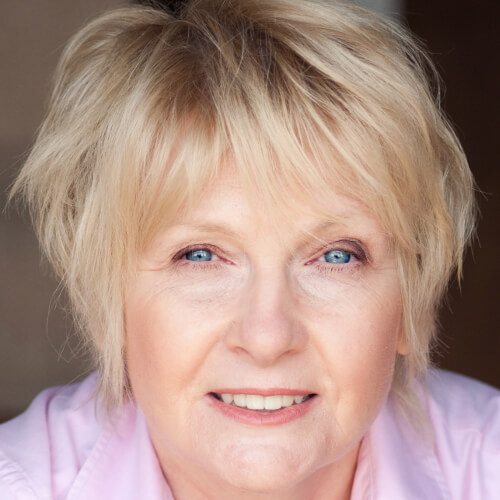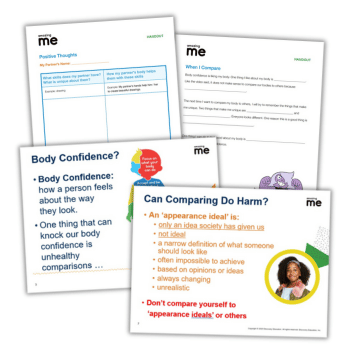Positive psychology – how to use it to build up children’s resilience

The positive education movement is working its magic worldwide to help children become more resilient, says Julie Hurst…

- by Julie Hurst

As we neared the end of the lesson Michael raised his hand. “Please Miss, can we end the lesson with a serotonin rush? We’ve worked hard today, and we could do with some extra happiness.”
His request was echoed by his classmates who chimed in with cries of: “Yes Miss, serotonin – let’s have some before we go home.” “Come on Miss, let’s make serotonin.”
As I agreed to the children’s requests, a glance to my right showed puzzlement on the face of the teacher who’d come to visit us that afternoon.
She turned to the deputy head who was conducting her tour of the school and asked: “Do the children here often ask for neurotransmitters?” “They do in this class,” was the immediate reply.
I’m a positive psychologist and for the last four years I’ve been working with a number of schools, including this particular primary, where I deliver weekly lessons, initially to nine- and ten-year-olds but now encompassing much of KS2.
Understanding emotions
Positive psychology is the scientific study of human flourishing. It is an evidence-based discipline that seeks to help people create lives of meaning, happiness, wellbeing and optimism.
When this science is applied in schools it is called positive education. It helps children become more resilient when faced with setbacks and challenges, and to cope more easily with failures.
None of this is at the expense of academic progress.
Rather, positive education underlines the fact that if we want children to perform at their best, they need to feel at their best, and that includes understanding how their brains work.
In positive education classes it’s not unusual for children to discuss the role dopamine plays in determination, serotonin in happiness and oxytocin in friendship and connection. They can also tell you how the right amount of adrenaline helps them perform well in a test, but too much and their ‘thinking brain’ shuts down.
It is not just ‘positive thinking’. It encompasses teaching children to cope with difficult emotions such as frustration, anger, sorrow and worry.
Understanding all emotions, and their temporary nature, is a key component of mental wellbeing, and it is the idea of promoting mental wellness that lies at the heart of the success of positive education.
Broaden and build
Although less well known in the UK, positive education is in fact a worldwide movement encompassing schools from many countries, including Mexico, Peru, Bhutan and the USA.
There is an International Positive Education Network that holds several events each year as more and more schools experience the benefits that positive education brings to their whole community.
So, how easy is it to introduce some of the positive education tools and skills into your classroom? Surprisingly easy if you start in the right place. Positive education’s main model is based on the acronym PERMA.
This stands for:
- Positive emotion
- Engagement
- Relationships
- Meaning
- Accomplishment
To fully embrace PERMA, aspects of these qualities are built into everyday interactions at school, supported by specific lessons where the focus is on one or more of these underlying principles.
A key notion of positive education is understanding that the more frequently we experience positive emotions the more optimistic, creative and resilient we become. It is based on Barbara Frederickson’s ‘broaden and build’ theory.
In keeping with this, teachers can challenge children to set positive-emotion goals for themselves. This involves working together to draw up a list of positive emotions (including some the children may find a stretch, such as inspiration, serenity, compassion or self-compassion).
Ask the children to choose a different emotion each day and work out how they could feel it, whether working alone or in small groups. Some are easier than others.
The children will need to give some thought to what makes them feel happy, calm, loved, joyful, peaceful or whatever the chosen emotion is.
In doing this activity, pupils learn what sparks certain feelings for them, and that they can have an impact on how they feel through the choices they make.
Realising they have the ability to bring about positive feelings in their lives is amazingly important for children and a cornerstone of creating good mental wellness.
Serotonin spike
As for that serotonin spike, it’s a wonderfully simple exercise. Thanks to American psychologist Fred Bryant, we know that savouring a positive moment – immersing ourselves in it fully – has a wonderful impact on happiness and even improves mental and physical health.
When we savour joyful moments, we can relive our happiness all over again. Ask the children to think of three things that make them happy and write them down.
They don’t have to be big things – playing with a pet, eating an ice cream or watching a favourite movie are all great examples. Then ask pupils to use their imaginations to recreate one of their choices in as much detail as possible.
Encourage them to see, hear and feel it as fully as they can, and then stay focused on it for a few moments. As little as 30 seconds can be enough to raise their serotonin levels.
That’s the thing about positive education. It works quickly and effectively, without the need for special equipment. It can be part of everyday school life and teachers often tell me it works life magic.
There is a wealth of research evidence about its impact on wellbeing at a time when there is an increasing focus on children’s mental health from both the government and regulatory bodies.
With time pressures on curriculums, budget pressures across the board and teachers being asked more and more frequently to become involved in pastoral care as well deliver great academic results, positive education could be the answer schools are searching for.
Julie Hurst (@juliewlbc) is a positive psychologist who works with schools throughout the UK. She is working with St Bede Teaching School in Bolton to run a six-day positive education course. For more information email bradburyj@stbedeacademy.org or head to thewlbc.com.










